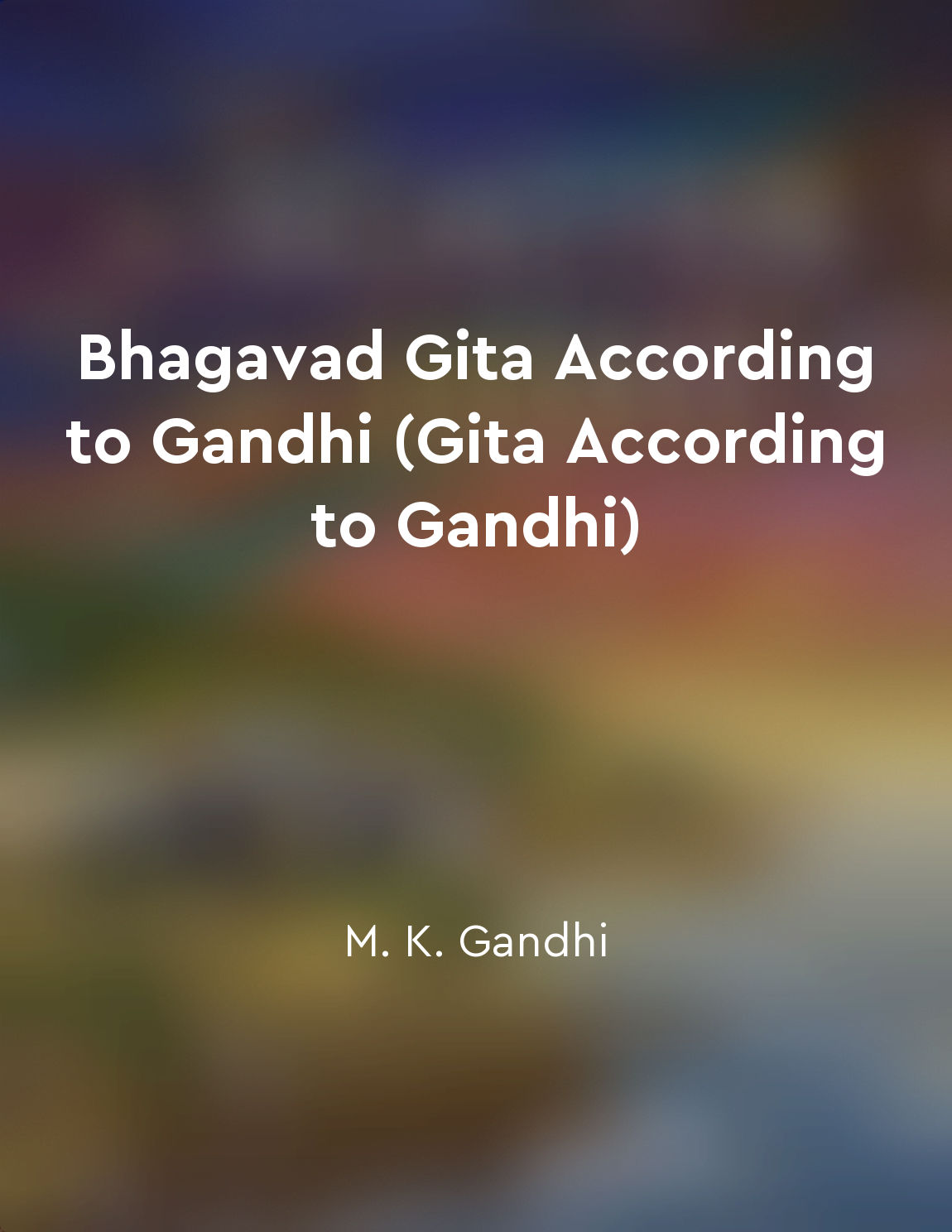Audio available in app
Letting go of attachments and ego from "summary" of BHAGAVAD GITA AS IT IS [HINDI LANGUAGE]. by A. C. Bhaktivedanta Swami Prabhupāda
When we talk about letting go of attachments and ego, we are essentially discussing the core teachings of the Bhagavad Gita. In Chapter 2, Verse 47, Lord Krishna instructs Arjuna to perform his duties without attachment to the results. This means that one should focus on doing their duty diligently, without being swayed by the desire for personal gain or recognition. The concept of letting go of attachments and ego is deeply intertwined with the idea of selflessness. In Chapter 3, Verse 17, Lord Krishna explains that one should perform their duties as a matter of duty, rather than for personal gain. By letting go of attachments and ego, one can cultivate a sense of detachment from the material world and focus on spiritual growth. Attachments and ego are obstacles that hinder our spiritual progress. In Chapter 3, Verse 43, Lord Krishna emphasizes the importance of controlling the mind and senses in order to overcome these obstacles. By practicing self-control and detachment, one can free themselves from the bonds of attachment and ego. The Bhagavad Gita teaches us that true happiness and fulfillment come from within, rather than from external possessions or achievements. In Chapter 5, Verse 29, Lord Krishna explains that one who is free from attachment and ego attains peace and happiness in life. By letting go of attachments and ego, one can experience true inner peace and contentment.- The concept of letting go of attachments and ego is a central theme in the Bhagavad Gita. By practicing selflessness, detachment, and self-control, one can overcome the obstacles of attachment and ego and achieve true spiritual growth and inner peace.
Similar Posts
Joy is an ongoing process, not a destination
Joy is not something that we achieve and then behold forevermore. It is not a place, a state, or even a feeling that we can hol...

Accept challenges with equanimity
When faced with challenges, it is essential to maintain a sense of calm and balance. This allows us to approach difficulties wi...
It is a practice of selflove and acceptance
Self-love and acceptance are essential practices in yoga. They are not just ideas or concepts to be understood intellectually; ...
Discover the beauty within
The beauty that is within you is not something that you have to seek outside. It is not something that you have to find in the ...
Release identification with thoughts
When you realize that the voice in your head is not who you are, a shift happens within you. You are able to observe your thoug...
Trust in divine timing
The universe has its own timeline, its own rhythm. Trusting in divine timing means understanding that there is a greater plan a...
The heart is a doorway to the divine
The heart, my dear friend, is not just a muscle that pumps blood throughout our bodies; it is a gateway to the divine. It is a ...
Developing patience allows for greater concentration
Patience is a key quality to cultivate in the practice of meditation. When we are patient, we are able to sit with discomfort a...

Practice deep breathing
To practice deep breathing is to engage in a simple yet powerful act that can have profound effects on your mind and body. Deep...
Detachment from desires aids spiritual progress
In the practice of mindfulness meditation, one of the key principles that we encounter is the idea of letting go of our desires...


